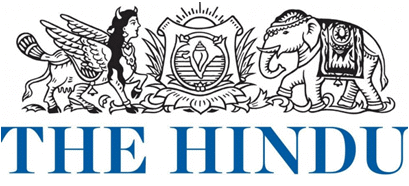The Hindu Analysis - 27th Sept 2020 | Additional Study Material for UPSC PDF Download

FRONT PAGE
News: PM pitches for a larger role in UN
UPSC Syllabus Headings
Prelims: Current events of national and international importance
Mains: GS 2
Sub Topic: Important International institutions, agencies and fora - their Structure, Mandate.
Context
(i) Articulating an inclusive vision for the world and India’s role in manifesting it, Prime Minister Narendra Modi on Saturday asked the United Nations General Assembly (UNGA) how long India would be kept out of the top UN decision making bodies.
(ii) He assured the world of the adequate supply of vaccines and highlighted India’s to the UN peacekeeping missions and its nonexclusive foreign policy, making the case for India a leading role in the world body.
Key particulars
(i) He said the UN enjoyed “unparalleled” respect in India but Indians were concerned whether the reform process would “ever reach its logical conclusion.”
(ii) He said the idea of Vasudhaiva kutumbakam [the world as one family] was in resonance with the UN’s founding ideals and said Indian troops had participated in about 50 UN peacekeeping missions.
(iii) He spoke of India’s foreign policy as being driven by the interests of “the whole [of ] humankind and not about its vested interests.
(iv) “When India strengthens its development partnership, it is not with any mala fide intent of making the partner country dependent or hapless,” he said. This was presumably an oblique reference to China’s model of infrastructure financing in the Indo-Pacific which has led to several countries falling into debt traps with Beijing.
Which of the statements given above is/are correct?
(i) India had been never a non-permanent member of the United Nation Security Council.
(ii) The 5 non -permanent members of the United Nation Security Council are elected for a term of one year.
PAGE NUMBER 13
News: Farm Bills: who gains and who loses
UPSC Syllabus Headings
Prelims: Indian Polity and Governance - Constitution, Political System, Panchayati Raj, Public Policy, Rights Issues, etc.
Mains: GS 2
Sub Topic: Government Policies and Interventions for Development in various sectors and issues arising out of their Design and Implementation
Context
Will States and their Agricultural Produce Market Committees be impacted? What does it mean for government procurement?
The story so far
(i) Farmers have taken to the streets, protesting against three Bills on the agriculture market reforms that were passed by Parliament last week and will become laws once they are signed by the President Farmers have taken to the streets, protesting against three Bills on the agriculture market reforms that were passed by Parliament last week and will become laws once they are signed by the President.
(ii) The political spectrum has expressed concern that the laws could corporatize agriculture, threaten the current mandi network and State revenues and dilute the system of government procurement at guaranteed prices.
What are the Three Bills?
(i) The Farmers’ Produce Trade and Commerce (Promotion and Facilitation) Bill, 2020, allows farmers to sell their harvest outside the notified Agricultural Produce Market Committee (APMC) mandis without paying any State taxes or fees.
(ii) The Farmers (Empowerment and Protection) Agreement on Price Assurance and Farm Services Bill, 2020, facilitates contract farming and direct marketing.
(iii) The Essential Commodities (Amendment) Bill, 2020, deregulates the production, storage, movement and sale of several major foodstuffs, including cereals, pulses, edible oils and onion, except in the case of extraordinary circumstances.
(iv) The government hopes the new laws will provide farmers with more choice, with competition leading to better prices, as well as ushering in a surge of private investment in agricultural marketing, processing and infrastructure.
Will farmers get minimum support price?
(i) These are the preset rates at which the Central government purchases produce from farmers, regardless of market rates, and are declared for 23 crops at the beginning of each sowing season.
(ii) However, the Centre only purchases paddy, wheat and select pulses in large quantities, and only 6% of farmers sell their crops at MSP rates, according to the 2015 Shanta Kumar Committee’s report using National Sample Survey data.
(iii) Farmers are also demanding that MSPs be made universal, within mandis and outside so that all buyers, government or private, will have to use these rates as a floor price below which sales cannot be made.
Why are protests vociferous in some States?
(i) Farmers in the States of Punjab and Haryana fear that without MSPs, market prices will fall.
(ii) These States are also most invested in the APMC system, with a strong mandi network, a well-oiled system of arthiyas or commission agents facilitating procurement, and link roads connecting most villages to the notified markets and allowing farmers to easily bring their produce for procurement.
What are some other concerns?
(i) One of the major concerns raised by regional political parties and nonBJP State governments is that agriculture falls in the State list, arguing that the Centre should not be making legislation on this subject at all.
(ii) They are concerned about the loss of revenue from mandi taxes and fees, which currently range from 8.5% in Punjab to less than 1% in some States.
(iii) The removal of stock limits and facilitation of bulk purchase and storage through the amendment to the Essential Commodities Act could bring large corporate players into the agriculture space.
(iv) Although they will bring much-needed investment, they could also skew the playing field, with small farmers unlikely to match them in bargaining power.
Which of the statements given above is/are correct?
1. Agriculture falls in the centre list.
2. The central government purchases all Agri commodities at MSP rate.
PAGE NUMBER 13
News: Changes in labour laws
UPSC Syllabus Headings
Prelims: Indian Polity and Governance - Constitution, Political System, Panchayati Raj, Public Policy, Rights Issues, etc
Mains: GS 2
Sub Topic: Government Policies and Interventions for Development in various sectors and issues arising out of their Design and Implementation
Context
What does the new Industrial Relations Code say? How does it affect unions and the right to strike?
The story so far
(i) Three Codes on labour law were passed by Parliament this week, amid strident criticism and vociferous protests by many trade unions.
(ii) Hailed by the industry as a much-needed reform and rationalisation of labour laws, the Codes on industrial relations, social security, occupational safety, health and working conditions amalgamate and replace several diverse laws on the subject.
What are the main features of the Industrial Relations Code?
(i) Unions The Industrial Relations Code combines the features of three erstwhile laws — the Trade Act, 1926, the Industrial Employment (Standing Orders) Act, 1946, and the Industrial Disputes Act, 1947.
(ii) It defines ‘workers’ to include, besides all persons employed in a skilled or unskilled, manual, technical, operational and clerical capacity, supervisory staff drawing up to ₹18,000 a month as salary.
(iii) It introduces ‘fixed-term employment’, giving employers the flexibility to hire workers based on requirement through a written contract.
(iv) Fixed-term employees should be treated on a par with permanent workers in terms of hours of work, wages, allowances and other benefits, including statutory benefits such as gratuity.
(v) The 2019 Bill applied this to units with 100 employees or more. The threshold has been raised to 300 in 2020 Code.
What does it say on trade unions?
(i) Where there is more than one trade union in an establishment, the sole negotiating union status will be given to the one that has 51% of the employees as its members
(ii) It has been brought down from the 75% requirement in the 2019 version
What are the provisions on layoff and closure?
(i) The provisions that require the prior permission of the government for layoff, retrenchment and closure are made applicable to only establishments that had employed 300 or more workers on an average per working day in the preceding 12 months.
(ii) The Code prescribes notice period, or payment in lieu of notice period, and prior government permission before retrenchment of anyone who has been in continuous service for a year or more.
(iii) Such a prior permission requirement is in place also for the closure of a unit, with the application to be filed 90 days prior to the intended closure.
How does the new Code affect the right to strike?
(i) The Code prohibits strikes and lockouts in all industrial establishments without notice No unit shall go on strike in breach of contract without giving notice 60 days before the strike, or within 14 days of giving such a notice, or before the expiry of any date given in the notice for the strike.
(ii) The Industrial Disputes Act, 1947, had placed such restrictions on announcing strikes only in respect of public utility services. However, the present Code extends it to all establishments. Even the Standing Committee on Labour had favoured limiting these provisions to public utilities.
Which of the above is/are combined in the Industrial Relations Code 2020?
1. The Trade Unions Act, 1926.
2. The Industrial Employment (Standing Orders) Act, 1946.
3. The Industrial Disputes Act, 1947.
|
21 videos|562 docs|160 tests
|
FAQs on The Hindu Analysis - 27th Sept 2020 - Additional Study Material for UPSC
| 1. What is the significance of The Hindu Analysis for UPSC exam preparation? |  |
| 2. How can The Hindu Analysis help in improving answer writing skills for the UPSC exam? |  |
| 3. Does The Hindu Analysis cover all relevant subjects for the UPSC exam? |  |
| 4. Can The Hindu Analysis serve as the sole source of current affairs preparation for the UPSC exam? |  |
| 5. How frequently is The Hindu Analysis updated, and how can one access it? |  |
















